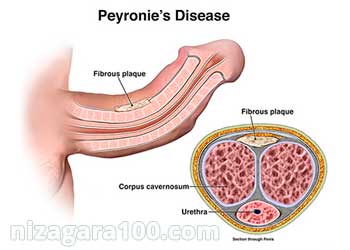Peyronie’s Disease: Specificities Of Current Treatments
Peyronie’s disease is a fibrous cavernite that affects 9% of men and can occur at any age even if the greatest incidence is between 50 and 60 years. This pathology consists in the formation of fibrous scarring plaques within the albuginea tunic of the penis. In practice it is possible to notice a curvature of the penis by the angulation that occurs due to the altered elasticity presented by the scar plaque with respect to healthy tissue.
There are studies reporting relationships with Dupuytren’s disease rather than with genetic factors or therapies such as hemodialysis. The disease is reported to regress and resolve autonomously only in 13% of cases, while for all other subjects it will be necessary to resort to surgery.

This is a pathology that does not have a certain cause, but for which today there is a simple and effective treatment: the collagenase of Clostridium histolyticum, an enzyme capable of softening the plaque and reduce the curvature. “As long as the plaque is small and there are no relevant symptoms anti-inflammatory medications and vitamin E supplements can be administered,” says Dr. Carol Salem of Scripps Mercy Hospital, San Diego. “In the second phase it is necessary to avoid penile retraction with the vacuum device, a medical device that acts as a vacuum pump and promotes the supply of blood in the cavernous bodies of the penis. If necessary, drugs against erection deficits can also be used, but they are still only symptomatic help”.
One of the advantages of collagenase is that people with Peyronie’s disease can be treated on an outpatient basis, concludes Dr. Salem, who has already administered the therapy to dozens of patients. The ideal, however, would be to do it before the plaque becomes excessively wide. In more advanced or complicated instances, surgery is a better option. Seek medical consultation as soon as you notice changes not to lose any time, is the doctor’s final advice on the matter of managing the disease of Peyronie.
